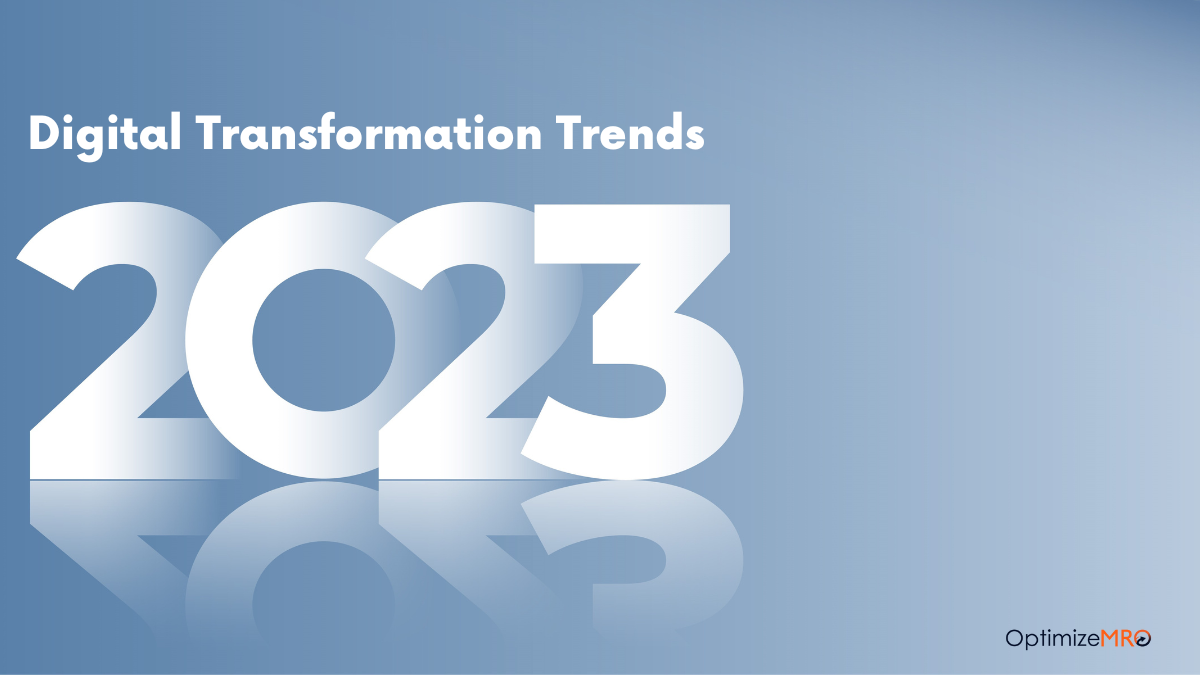Top 9 digital transformation trends today
(Baonghean.vn) - Wider adoption of low-code platforms, increased migration to the cloud, leveraging artificial intelligence (AI) and machine learning (ML) technology, increased process automation, and greater investment in blockchain technology, etc. are typical digital transformation trends this year.
 |
Illustration photo. |
In order to stay agile and gain a competitive edge in the market, organizations and businesses must constantly monitor new digital transformation trends and strive to implement advanced technologies that help them operate their businesses more efficiently every day.
Digital transformation is a difficult and challenging journey, but if organizations and businesses have a clear strategy, they can benefit by streamlining internal operations and automating labor-intensive tasks. Digital transformation is not only about changing the way we do business, but also about changing the way we live. Digital transformation includes four main areas: data, technology, people and processes.
Keeping up with digital transformation trends will help organizations and businesses track the latest changes in technology and business methods including key performance indicators (KPIs). This allows organizations and businesses to keep their systems updated and improve efficiency. In addition, they can help organizations and businesses identify new opportunities to improve business processes.
Digital transformation is becoming increasingly important in both the private and public sectors because of its significant benefits. As organizations and businesses become more global and interconnected, they need to find ways to apply digital technology more effectively.
Technology is driving change in every industry and sector. In 2023, organizations and businesses must embrace digital transformation to stay ahead and remain competitive. In 2023, we will see a series of new and evolving digital transformation trends that are set to shape how organizations approach technology and innovation.
According to statistics from Statista (Germany), a company specializing in collecting and providing statistical data on consumers, in 2022, spending on digital transformation is expected to reach 1.6 trillion USD. By 2026, global spending on digital transformation is forecast to reach 3.4 trillion USD.
Understanding digital transformation trends is an approach to ensure that organizations and businesses are on the right track, thereby helping the digital transformation process to be successful. Here are the top 9 digital transformation trends in 2023:
1. Wider adoption of low-code platforms
Low-code is a software development approach that requires little or no coding to build applications and processes. Instead of using complex programming languages, the Low-code model allows users to use intuitive interfaces with low-level logic to develop applications.
In other words, Low-code platform is a visual application development approach that allows developers from professional to non-professional level to collaborate and quickly build and deploy applications. It provides a graphical user interface and drag and drop tools that allow business analysts and other non-technical users to design and create custom solutions without writing code.
The use of low-code development platforms has increased in recent years due to the benefits they bring in terms of time, cost, scalability, and risk reduction. These benefits have given rise to new use cases such as: Rapid prototyping, rapid deployment, and new product development.
According to the forecast of Gartner (USA), by 2024, Low-code application development will account for more than 65% of application development activities. The global Low-code platform market value is estimated at 12.85 billion USD in 2020 and is expected to reach 65.15 billion USD in 2027 with a compound annual growth rate (CAGR) of 22.7% in the period from 2020 to 2027.
2. Increase migration to the cloud
Cloud computing is a service model that allows users to access shared computing resources (network, server, storage, applications, services) through network connection easily, anytime, anywhere, on demand.
One of the most discussed digital transformation topics is moving data from on-premises to the cloud. Organizations and businesses are increasingly relying on cloud technologies, especially when it comes to cutting costs, improving accessibility, and outsourcing routine maintenance.
More businesses will move to the cloud as technology evolves and internet speeds increase, especially in countries where they have historically had slow growth, to take advantage of all the advantages they offer.
According to Gartner forecasts, worldwide user spending on public cloud services will increase by 20.7% to reach $591.8 billion in 2023, up from $490.3 billion in 2022.
3. Artificial intelligence and machine learning
AI and ML are the most discussed technologies in all digital transformation topics. Organizations and businesses can use AI and machine learning to design and implement digital transformation processes, focusing on gaining a competitive advantage with customers today and in the future. These technologies help businesses develop complete data transformation strategies based on real-time market information instead of piecemeal approaches of disjointed systems.
ML analyzes and compares patterns in big data to provide insights into customer behavior and other events. It also makes suggestions on how to improve company processes and customer interactions. Meanwhile, AI mimics human intelligence in recognizing and reacting to behaviors and events. AI uses algorithms to build or change programs to take advantage of ML insights.
Using AI and ML to plan and execute digital transformation allows organizations and businesses to stay ahead of their competitors. AI and ML-based digital transformation enables data collection and analysis to better understand customers and accelerate the introduction of new products and services. Data transformation has become an ever-evolving process, providing insights and solutions to the ever-changing customer and market landscape, thanks to AI and ML.
More and more software is being used by organizations and businesses that combine these two technologies to help them develop the intelligence needed to free employees from tedious activities and support senior management in making informed judgments.
4. Smart search
Smart search is the process of quickly locating information when needed, regardless of where it is stored. To provide users with more personalized and accurate search results, smart search uses AI technologies such as machine learning, computer vision, semantic search, and natural language processing. It breaks down the barriers of single, unintegrated business data (data silos) in enterprises, allowing information to be extracted from any potential data source.
Smart search can deliver smarter, faster results and provide a single point of access to an enterprise's content sources, allowing data to be enhanced, searched, and analyzed in both structured and unstructured formats.
5. Process automation
Process automation is the application of technology to an operating model to perform recurring tasks or processes within an organization to replace manual processes. It is done to reduce costs, increase efficiency, and streamline processes. By digitizing and standardizing business processes, repetitive tasks can be eliminated.
The purpose of process automation is to eliminate repetitive workflows to improve efficiency and productivity. Process automation does not focus on one department or process, but rather looks at the organization as a whole to see which processes can be improved through automation.
Process automation is one of the most important factors when considering digital transformation ideas. In the medium to short term, these technologies offer the potential to increase productivity, enhance customer experience, and digitize operations.
More than 80% of business leaders say they are accelerating workflow automation and increasing the use of remote workers. The best way to accelerate automation is to choose the right business process automation tools, which can help produce results faster with less coding skills.
These tools, when used in conjunction with digital signature software, will change the way organizations and businesses operate on a daily basis.
6. Increase investment in blockchain technology
Besides technologies such as AI and cloud computing, blockchain plays an important role in the comprehensive digital transformation process, helping organizations and businesses upgrade their workflows and optimize operational efficiency.
Blockchain is a distributed database that allows users to create and maintain secure transactions across multiple computers. The structure of data in blockchain is completely different from the structure of traditional databases as data is stored in blocks linked together in a chain. This data cannot be deleted or modified without the consent of the users in the blockchain network system.
Therefore, businesses can use blockchain technology to track orders and online payment transactions to improve security, transparency and prevent unauthorized and fraudulent transactions.
Blockchain is an emerging technology that can be used in many different industries such as finance, healthcare, supply chain management, etc. It has the potential to disrupt the traditional way of doing business in many fields by allowing us to create smart contracts and store permanent records without fear of tampering.
As software vendors need a more secure environment to prevent sensitive information from being leaked to the public, this technology is also considered an important element in the list of digital transformation trends to watch.
7. Virtual collaboration
Digital transformation is all about increasing productivity, making teams more efficient, and delighting customers. Virtual collaboration helps team members share information and ideas while physically separated. Some examples of virtual collaboration tools and communication platforms are video conferencing tools, email tools, content planning tools, instant messaging tools, and agile project management tools.
The COVID-19 pandemic is one of the worst things that has happened to us in recent times, but on the positive side, it has significantly impacted the decision of organizations and businesses to start using or actively adopting digital technologies, which has encouraged organizations and businesses to increase their investment in digital software that supports virtual collaboration.
Using virtual collaboration technologies will help organizations and businesses recruit talent across borders without having to relocate their workforce; cut costs such as office rent, gas and electricity bills, cleaning costs, construction costs, etc.
8. Customer data platform
Customer data platforms are an important source of customer data that organizations and businesses can leverage when building communication and marketing campaigns. Using a customer data platform will help organizations and businesses convey personalized and engaging messages to their customers.
A customer data platform is packaged software that combines data from multiple tools to create a single, centralized customer database. A customer data platform is used to manage customer information, analyze customer trends, identify opportunities for future marketing efforts, and build more personalized customer experiences.
In addition to providing organizations and businesses with a complete view of their customers, a customer data platform will help organizations and businesses manage customer data more organized, analyze customer experiences more deeply, and improve customer privacy and data protection.
Customer data platforms will continue to play a key role in digital transformation in 2023 as organizations increasingly focus on collecting, managing, and activating customer data.
9. Everything as a service
Everything as a Service (XaaS) is a business model for diverse solutions that combine hardware, software, and services. It is one of the important digital transformation trends and will continue to gain traction in 2023. XaaS is a business model where organizations and businesses provide their products and services as a service based on customer subscriptions.
There are many types of services related to cloud computing and remote access, such as software as a service (SaaS), platform as a service (PaaS), infrastructure as a service (IaaS), communication as a service (CaaS), and network as a service (NaaS), etc.
Before the advent of XaaS and cloud computing, organizations and businesses often had to purchase and install licensed software packages to set up their networks. The XaaS model also provides organizations and businesses with extreme flexibility and scalability. For these reasons, XaaS will continue to be a popular choice for businesses of all sizes in the future.
In summary, digital transformation trends in 2023 are set to bring significant changes in the way organizations, businesses, and individuals interact with technology. However, these digital transformation trends bring both challenges and opportunities for organizations and businesses to stay ahead in the ever-evolving digital landscape.








